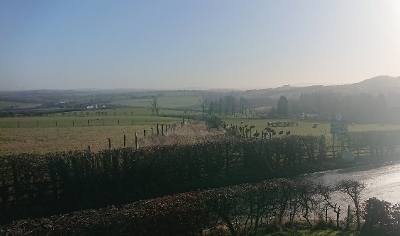Local Biodiversity Action Plan
Local Biodiversity Action Plans identify the local priorities for protecting and enhancing ecosystems, habitats and species in each Local Authority area. They are comprehensive plans that all partners can work to, enabling a joined-up approach across the area.

Scottish Biodiversity Strategy
The latest Scottish Biodiversity Strategy (opens new window), produced in 2023, provides a vision for 2045. The strategy reflects international commitments to biodiversity across the globe, discussed and agreed at the UN Biodiversity Conference (COP15) in 2022. It focuses on the desired outcomes for the next 10 years, to halt the loss of biodiversity in Scotland and to restore the essential services and benefits to society that a healthy natural environment provides. Local Authorities ensure these commitments are put into practice at a local scale.
The main aims of the West Lothian Local Biodiversity Action Plan (LBAP) are to outline how our local biodiversity can contribute to these national/global priorities, to help us manage the land to promote the protection, enhancement and creation of habitats, to ensure connectivity throughout the area and to facilitate a wider understanding of locally important habitats and species.
Working Together for Nature - West Lothian's Biodiversity Action Plan 2025-35
Working with stakeholders across West Lothian, the council has updated the West Lothian Biodiversity Action Plan.
You can read the plan here - Working Together for Nature: A Biodiversity Action Plan for West Lothian 2025-35 (PDF, 1 MB)(opens new window)
This document sets out a collective plan for protecting, restoring, enhancing and connecting biodiversity across the area over the next 10 years. In order to halt biodiversity loss by 2030 and to begin restoring and enhancing nature, as set out in the Scottish Biodiversity Strategy, this local plan needs to be a joint effort. Existing and new stakeholders can do their bit by taking forward actions on their patch, where appropriate. If we all use the plan to guide us, then we know our actions will complement the actions of everyone else across the area. We can also work with others to achieve joint aims and accelerate bigger positive impacts. If you would like further guidance on how you can protect, restore, enhance and connect biodiversity in your area, please contact the Ecology and Biodiversity Team at Ecology&Biodiversity@westlothian.gov.uk (opens new window).
Habitat Map of West Lothian
A key part of updating the LBAP was finding out what we already have and where, by mapping all of West Lothian's habitats. The interactive map below shows all the habitats of West Lothian, as they were mapped by consultants in 2022. It is a broad-brush map that helps us to see which habitats exist, roughly where they are and approximately how much of them we have. The map isn't accurate down to individual site scale and can't be used to plan specific land use or habitat management projects - accurate site surveys are required for that. But it does inform our Biodiversity Action Plan and helps us to strategically plan habitat networks and connectivity across the area. We can also use the map as a baseline and compare it with updated habitat maps in future years to see what's changed.
Follow the link below to click on the different habitats to switch them on/off and to see where they occur across West Lothian.
West Lothian Habitat Dashboard
West Lothian Baseline Biodiversity and Natural Capital Assessment
In 2022 we worked with consultants Natural Capital Solutions and WSP to map all the habitats in West Lothian and to assess their condition, their significance and their biodiversity value. Following this baseline biodiversity assessment, a Natural Capital Assessment was carried out to quantify the benefits that each habitat provides, for example carbon storage, air quality regulation, etc. Reports from both these exercises are below. These assessments give us an approximate idea of what we have and where, enabling us to plan land management at a strategic level across West Lothian.
When viewing the resulting figures and maps, it is important to recognise the limitations of the data. For example, within the habitat mapping (which forms the basis for the natural capital assessment) hedgerow, field margin and street tree data have not been included; and within the natural capital assessment, the pollinator heat-maps for example, are based on bumblebee and solitary bee data only. All methodologies for calculating the results are detailed in the reports so that assumptions and limitations can be acknowledged.
- West Lothian Baseline Biodiversity Report 2023 (PDF, 1 MB)(opens new window)
- West Lothian Natural Capital Assessment Report 2023 (PDF, 3 MB)(opens new window)
Stakeholder engagement
In 2023 we gathered initial information from stakeholders through questionnaires, which were sent out to other services within the council and external organisations - from local community groups to regional and national supporting organisations as well as other public and private landowners in the area. A stakeholder event, bringing everyone together, was held in November 2023:-
- Local Biodiversity Action Plan Full Stakeholder Consultation Report (PDF, 1 MB)(opens new window)
- Appendix A - LBAP Questionnaire Feedback Landowners 2023 FINAL (PDF, 484 KB)(opens new window)
- Appendix B - LBAP Questionnaire Feedback Supporting Organisations 2023 FINAL (PDF, 449 KB)(opens new window)
- Appendix C - LBAP Stakeholder Event Report Nov 2023 (PDF, 493 KB)(opens new window)
- Appendix D - Biodiversity Action Map (PDF, 300 KB)(opens new window)



